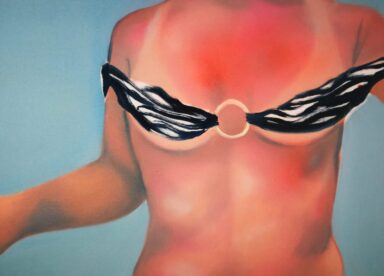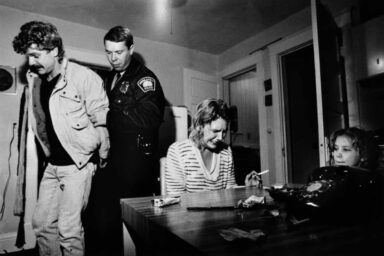Let me tell you about the day I almost interviewed Mimmo Paladino…
Text by: Fiammetta Cesana
Event photography by: Carmelo Farini
October 25, 2018. I find myself in the heart of Milan, in the most artistic historical district of the city, more precisely underneath a bronze Napoleon Bonaparte within the Palazzo di Brera’s courtyard of honor. It’s an unusual autumn evening, the air is still warm, but the ochre, yellow sky is just that of the falling leaves. In front of me, a group of elegant people is making its way into the north-east wing of the large portico, where a female duo of harpist and violoncellist is performing at the entrance of the Bottega di Brera.
I check one last time to have my hair tidy in a mirror-pond, and finally join the crowd near the musicians. Among the comings and goings of guests and the piles of books ready to be autographed, I immediately notice him: Mimmo Paladino is one of those people who doesn’t need either height or showy mise to appear… my gaze is captured by something more, by an energy, a real aura, which is impossible to ignore.
To rhythm of the strings they all orbit around him, in a very discreet way, almost like in dance moves… so I can inuit it right away: he is a bashful man, who masterfully doses the effects of his fame. Today, however, he can’t help but be in the spotlight: the event celebrates the publication of his new book and he is here, just arrived from New York, to sign the copies. I would like to come closer to ask him many questions, but the occasion requires a certain distance and no journalist is allowed to invade that aura.
Painter, sculptor, photographer, engraver, scenographer… I wonder how it could be the life of a talent so thriving of styles and interests, a passionate of archaic taste but also of American pop artists, skilled in any kind of creative production, from ceramics and serigraphs – now produced exclusively for Skira editore for the release of the book – to lightening installations and monumental works… Though I can’t ask the questions I would like, I still feel myself lucky, as well as all the people around me and the photographer who is with me and who is proudly able to steal some shots of this unique moment. We are next to that man who 40 years ago silently withdrew to paint a picture, revolutionizing the Italian panorama of modern art.
“Paladino”, in name and deed, of the so-called Transavanguardia: the movement coined by Achille Bonito Oliva to indicate those that during the artistic experiments of the 70s decided to return to painting. In decades of incessant and interdisciplinary work, the artist from Campania, despite having moved to the big apple, has always made of the Italian cultural heritage a consistent reference point in his imagery. Based on the primitive power of images, he recalls the traditions of his land mixed with Egyptian, Etruscan and early Christian iconography.
Among his iconic figures we find masks of inexpressive faces, which in the 80s moved from paintings to the three-dimensionality of sculptures, and that today we find in the limited collection of ceramics. Christianity itself is not an unknown themes for Paladino: we remember works like “Crocifisso” (Crucifix) and “La Rivoluzione” (The Revolution) – the latter was temporarily shown in the crypt of San Biagio Church in Rimini. The crux is a recurrent motif in his works, not always with orthodox meanings: something it gives the idea of primitivism, of a mere ancestral sign. His penchant for the ancient realm is often alternated with pop culture, as for the lightening designed in 2012 for the Apulian stage of “La Notte della Taranta”, a festival of traditional Salento music.
Regarding the public art – a creative field currently much debated in the light of the Venice Biennale 2019’s choices – is another pinnacle of his production. “La Montagna di Sale” (Salt Mountain), exhibited in the Baglio di Stefano in Gibellina, and recreated in 2011 in Piazza del Duomo in Milan, is a memorable work of majestic dimensions depicting thirty horses immersed in a cement and fiberglass pyramid.
And as if that were not enough, Paladino was also film director of the movie “Quijote”, acclaimed at the 2006 Venice Film Festival: a work in which the artist’s research between past traditions and contemporary events is exemplary in the reconstruction of knight errant’s history through temporal reversals, from the Middle Ages to modern times.
To know more about this secretive and incredibly eclectic artist, don’t miss to read (and look) “Paladino” book. Curated by Germano Celant, it offers a historical-critical analysis, from 1963 till today, over the artist’s contribution to the renovation of painting, photography, sculture, as well as architecture, cinema, lirica and theatre… collecting also a wide series of images and poetical quotes


